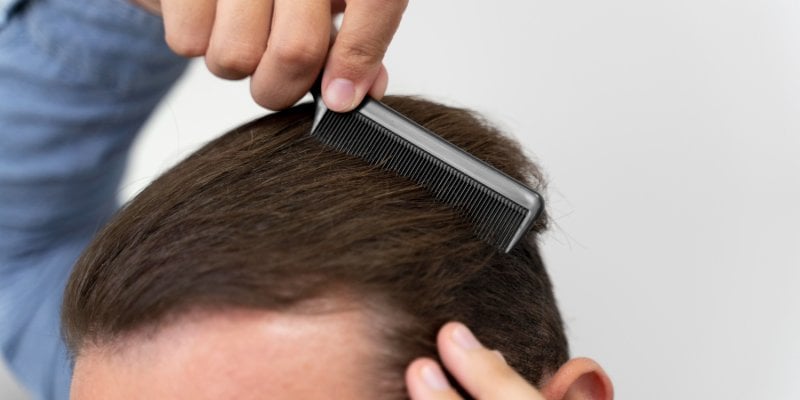
Types Of Hair Loss
Hair loss, or alopecia, is a condition caused by a disruption in the body's hair production cycle. Hair loss can occur anywhere, but the scalp is the most commonly affected. The scalp contains 100,000 hairs that go through cycles of growing, resting, falling out, and regenerating.
A hair growth cycle has three stages. Hair grows rapidly during the anagen phase. This stage could last for years. Hair stops growing and separates from the follicle during the catagen phase, which is the structure that holds the hair in place. The catagen phase lasts approximately 10 days. The follicle rests for up to three months during the telogen phase, after which the hair falls out. As new hair grows in the same follicle, the next anagen phase begins.
If this cycle is disrupted or a hair follicle is damaged, hair may begin to fall out faster than it is regenerated, resulting in symptoms such as a receding hairline, hair loss in patches, or overall thinning.
Alopecia Androgenetic
The most common type of hair loss is androgenetic alopecia, which affects more than 50 million men and 30 million women in the United States. Androgenetic alopecia, also known as male or female pattern hair loss, is hereditary but treatable with medication or surgery.
Telogen Effluvium
Telogen effluvium is a type of hair loss that occurs when a large number of follicles on the scalp enter the telogen phase of the hair growth cycle but do not enter the next growth phase. Hair falls out all over the scalp as a result, with no new hair growth. Telogen effluvium does not usually result in total baldness, even though you may lose 300 to 500 hairs per day and your hair may appear thin, especially at the crown and temples.
Effluvium Anagen
Anagen effluvium is a condition that causes rapid hair loss as a result of medical treatment, such as chemotherapy. These potent and quick-acting medications kill cancer cells, but they may also inhibit hair follicle production in the scalp and other parts of the body. Hair usually grows back on its own after chemotherapy. Dermatologists can prescribe medications to help hair regrow more quickly.
Alopecia Areata
Alopecia areata is an autoimmune disorder, which means that the immune system of the body attacks healthy tissues, including hair follicles. This causes hair loss and inhibits the growth of new hair.
Tinea Capitis
Tinea capitis, also known as scalp ringworm, is a fungal infection of the scalp that is a common cause of child hair loss. This condition causes hair to fall out in patches, sometimes in a circular pattern, resulting in bald spots that can grow larger over time.
Alopecia Cicatriciale
Scarring alopecia, also known as cicatricial alopecia, is a rare type of hair loss in which inflammation destroys hair follicles and scar tissue forms in their place. Hair does not regrow after scar tissue forms.
Abnormalities In The Hair Shaft
A variety of hair shaft abnormalities can result in hair loss. These conditions cause hair strands to thin and weaken, making them brittle. Hair loss occurs as a result of a break somewhere along the hair shaft, which is the visible part of a hair strand, rather than in the follicle. This can cause overall thinning as well as a large number of small, brittle hairs.
Hypotrichosis
Hypotrichosis is a rare genetic condition in which the scalp and body have very little hair growth. Babies born with this condition may have normal hair growth at first, but their hair falls out after a few months and is replaced with sparse hair.
You can contact our professionals in Asmed to learn more about your hair loss, and hair transplant in Istanbul and their techniques such as FUE. We strive to give the best possible service for our patients and make sure their needs are taken care of in our clinic.
Book hair transplant free consultation with our expert medical team to learn more about hair transplant procedures and hair transplantation costs.